When upgrading your legacy CAD system to a newer or different CAD platform, CAD migration is inevitable. However, it's crucial to recognize that this process can introduce changes in both quality and form to your designs. Here, we delve into the importance of CAD migration validation and our solution to maintain your CAD designs integrity and quality.
What is CAD Migration Validation?
CAD migration validation aims to identify any quality or form changes introduced when migrating a CAD model from a legacy to a new CAD system. This process could involve various migration techniques such as BREP conversion, history-based translation, or manual remastering.
When utilizing neutral formats like IGES, STEP, or Parasolid, migration validation helps you pinpoint if alterations have been introduced during the export or import stages.
Why is it Essential?
While manually remastering a model during migration, relying solely on visual comparison to spot changes might seem convenient. However, such an approach is flawed, as minor yet significant changes can easily go unnoticed.
This is where CAD migration validation becomes invaluable. It enables you to compare different versions of a model more precisely and objectively, aiding you in detecting modifications that could impact your design's quality or functionality.
Furthermore, CAD migration validation can assist you in comparing various migration methods to identify the most efficient options. In other words, it can help you determine which migration process is most effective and least likely to introduce errors or unwanted changes.
Presenting a CAD Conversion Validation Report with CADIQ
CADIQ identifies problems and differences in CAD models that can impact downstream applications like analysis and manufacturing. Its advanced comparison feature allows users to accurately compare 3D CAD models. This aids in validating CAD data exchange, migration, and legacy data remastering processes. It also facilitates automated, documented change control and validation as part of a certified data delivery process.
CADIQ validates part and assembly models from all major CAD systems and neutral formats. It highlights geometry, features, and product structure that has been added, omitted, or modified. All differences are quickly highlighted with the help of graphic region and mouse controls, configured to mimic the user interface of most major CAD systems.
Example of CAD Conversion Validation Reporting with CADIQ
The PDF example below was auto-generated using CADIQ to compare a source Catia V4 model with its converted Catia V5 model. CADIQ settings were configured to document form changes and quality defects, with some minor flaws purposely filtered out. Users can navigate each quality defect on both the source (left side) and target (right side), select a diagnostic type, then zoom in on each deviation or flaw. Additional details about quality defects or deviations between the V4 and V5 models are available in the properties.
The PDF template is entirely customizable. You can alter the logo, add intellectual properties, or include/exclude 3D windows, icons, and other fields. Ensure to use Adobe Reader X or higher and enable javascript for correct 3D PDF visualization.
Conclusion
CAD migration validation is a critical step for maintaining your CAD models' quality and integrity. Whether you opt for BREP conversion, history-based translation, or manual remastering, it's essential to check for alterations introduced during the migration. This way, you can ensure your designs are as accurate and reliable as possible, reducing the risk of future errors or issues.
CADIQ offers automatic validation of your conversions, regardless of the methodology. Reports can be generated in text format or side-by-side 3D visualization for quick identification of deviations.
In the end, CAD migration validation is a practice that can help you improve your design process, enhance your product quality, and strengthen customer trust in your services. Incorporate this practice into your workflow today!


